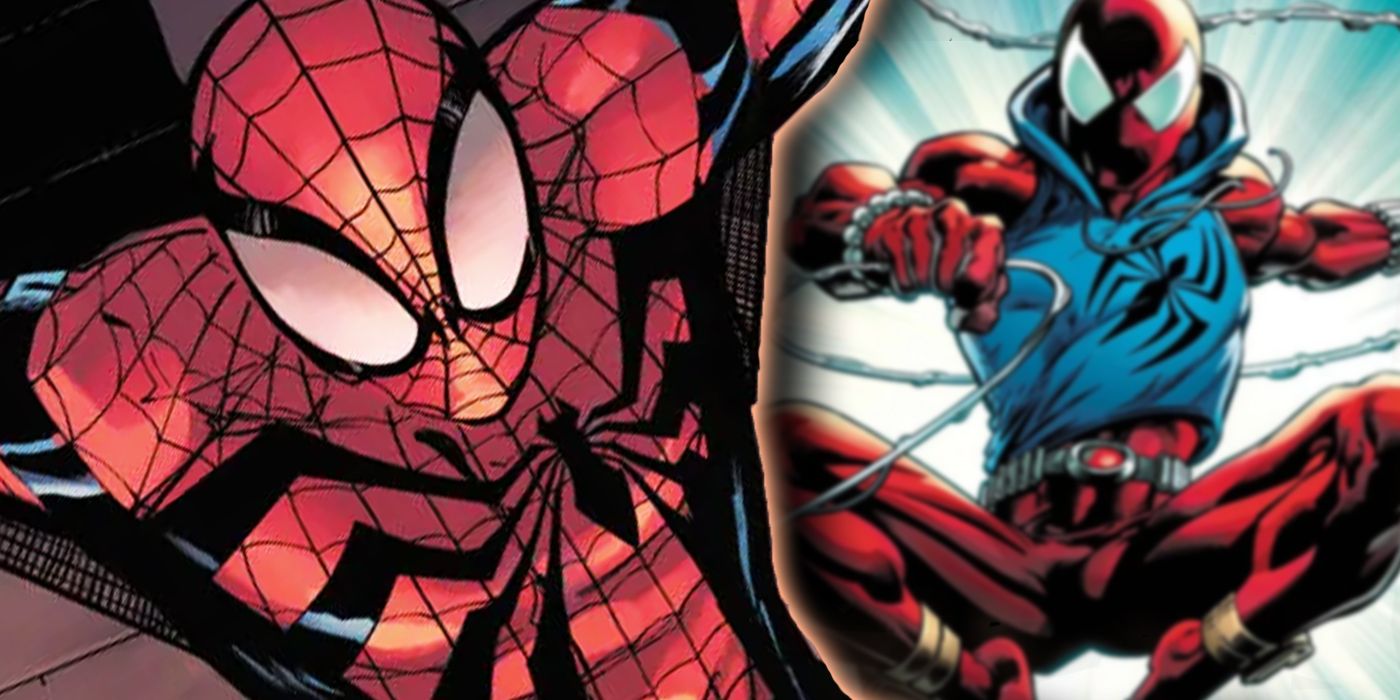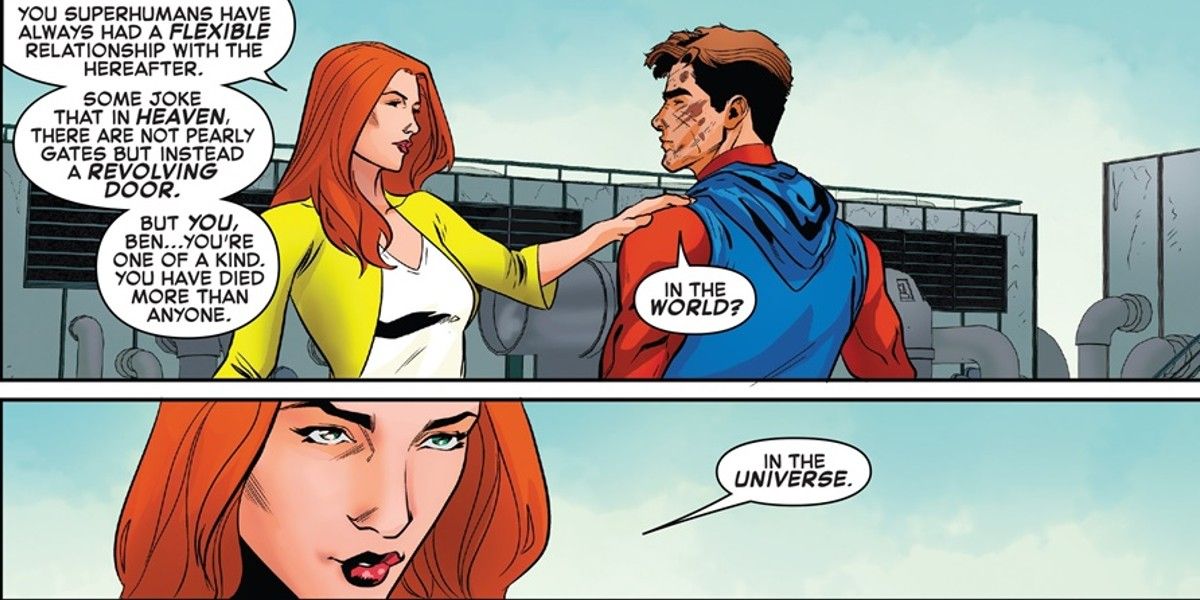Despite how Spider-Man's generally maligned Clone Saga has become over the years, it is still one of the most indelible periods in the wall-crawler's life, and introduced a number of new spider heroes to the Marvel Universe. The most memorable of these clones has always been Ben Reilly, best known as the Scarlet Spider, who is poised to once again take up the mantle of Spider-Man. The road from his horrifying beginnings to where he is now hasn't been an easy one, though. In fact, it has been so bad that it has left Reilly as the Marvel Universe's official record holder for having died the most times, a fact that even Death has confirmed.
In 2017's Ben Reilly: The Scarlet Spider #7 (by Peter David and Will Sliney), Reilly faced the most epic confrontation of his superhero career. He was already embroiled in what should have been a fight to the death with Kaine, another super heroic clone of Peter Parker, when their battle was interrupted by Rick Jones' ex-wife Marlo Chandler. Despite the threat posed by stepping into a superpowered confrontation, Marlo put an end to the battle by merely placing her hand on Kaine.
As it turned out, the Marlo Chandler who Ben had been running into from time to time was actually the cosmic entity Death, and her business with Ben was more important than any petty grievance between clone brothers. While the appearance of Death is hardly ever a good omen, her arrival was more benevolent than anyone could have expected. Rather than wanting to do any harm to Ben Reilly, Death only wanted to save his soul from being broken beyond repair.
Death then revealed to Reilly that he had died more times than any other being in the entire universe. This was a phenomenon tied to his origin decades prior as well as what were then very recent events. When Ben Reilly first appeared in the Marvel Universe back in 1975's Amazing Spider-Man #149 (by Gerry Conway and Ross Andru), he didn't even have a name of his own, but rather was referred to as Spider-Clone. Created by the villainous Miles Warren (aka Jackal), Ben Reilly was designed as a perfect clone of Spider-Man intended to take down the hero in retribution for the death of Gwen Stacy. After seemingly dying in his first encounter with Spider-Man, Ben Reilly spent years wandering the streets alone before becoming the Scarlet Spider and eventually being killed in action by Norman Osborn. While Peter and others close to him mourned Ben's death, the Jackal saw an opportunity to improve upon his life's work in terrifying fashion.
The villain was successful in bringing Ben back to life, this time with memories all the way up to his death. Unfortunately, this process came with the nasty side effect of cellular degeneration, leading Jackal to kill and resurrect Ben over and over again in a bid to perfect his work. The trauma caused by this cycle eventually broke Ben, who turned on his creator, even usurping the title of Jackal for a time. Although that endeavor didn't last, the damage done to Ben's soul by his repeated deaths was another story, and it was this that brought Death to his doorstep. The cosmic entity showed Ben the damage that had been done, imploring him that the only way to heal it would be with a long period spent doing good while avoiding death at all costs.
In the years since then it seems like Ben has managed to become the hero Death knew he was destined to be, even if he hasn't been able to follow her advice to the letter. Still, his valiant efforts have certainly done wonders for him, especially considering he is once again going to be acting as Spider-Man in an official capacity.
With any luck, Ben Reilly will continue to lead the heroic lifestyle that even Death believes he is capable of. It can only be hoped that his next stint as Marvel's primary web-slinger adds to his life instead of taking it away...again.



